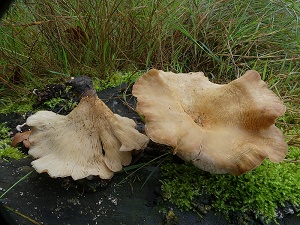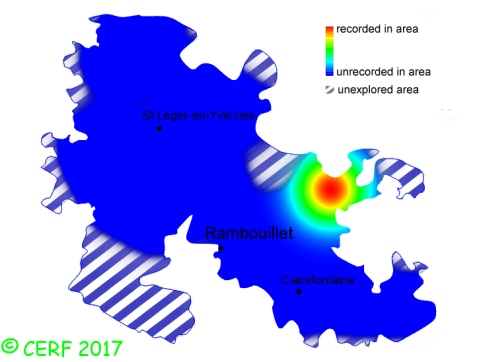| Panus conchatus (Bull.:Fr.) Fr. |
|
|
|
|
|
|
The cap is tinged with vinaceous lilac in the youth, then reddish ochre-brown, getting paler from the centre, convex then concave-depressed to funnel-shaped; its margin is thin, incurved a long time then wavy, cracked and sometimes grooved. The cap surface is smooth or sometimes finely scaly with age, often cracked-wrinkled concentrically, non gelatinous, dry. The stem is off-centred to lateral, very short and tapering towards base, concolorus with cap, tough, without ring. The flesh is whitish, thin, elastic to tough, unchanging; its taste is faint, mild to bitterish (with age); the odour is weak or not distinctive, or of wood blewitt (Lepista nuda) or clouded funnel (Clitocybe nebularis) according to some authors; its texture is fibrous, elastic. The gills are lilac-white in the youth (especially at the edge), then ochre-pink then brown, very decurrent, not toothed, crowded . The spore print is white. This species is saprophytic. It grows on dead wood, growing in tufts but not always, in broad-leaved woods, on stumps of various deciduous wood, often on birch, beech. The fruiting period takes place from June to November.
Distinctive features : pale ochre-brown cap with a lilac tinge, depressed or funnel-shaped; very decurrent gills, not toothed, crowded, with a lilac tinge in the youth; short, off-centred or lateral stem; elastic to tough flesh; often in tufts; on stumps of deciduous trees Panus conchatus is rare and confined in the forest of Rambouillet, and is infrequent, more generally speaking . | ||
|
page updated on 14/01/18

